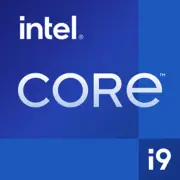Intel Core i9-7920X

Intel Core i9-7920X in 2025: Is It Worth Getting the HEDT Legend?
Architecture, Performance, and Practical Tips
Key Specifications: The Power of Skylake-X
The Intel Core i9-7920X processor, released in 2017, is still in demand in the high-performance workstation niche. Its Skylake-X architecture (14 nm) is tailored for enthusiasts and professionals.
- 12 cores, 24 threads — a solid foundation for multi-threaded tasks.
- Base clock of 2.9 GHz / Turbo Boost up to 4.3 GHz — dynamic performance.
- 17 MB L3 cache and support for Quad Channel DDR4 — fast data access.
- TDP of 140 W — requires good cooling.
- Technologies: AVX-512, unlocked multiplier, 48 PCIe 3.0 lanes.
Despite its age, the processor shows solid results in Geekbench 6: 1053 (Single-Core) and 4327 (Multi-Core). However, the 14 nm manufacturing process falls behind modern 5-7 nm chips in energy efficiency.
Compatible Motherboards: Searching for Rare Finds
The i9-7920X uses the LGA 2066 socket, which is supported only by X299 chipset motherboards. By 2025, new boards are scarcely produced, but you can still find:
- ASUS ROG Rampage VI Extreme — a top model with advanced VRM and RGB lighting (around $500).
- MSI X299 Gaming Pro Carbon AC — a good balance of price and quality ($300-$400).
- Gigabyte X299 AORUS Ultra Gaming — a budget option with basic features ($250-$350).
Selection Tips:
- Check for CPU support in BIOS (a firmware update may be required).
- Look for boards with reinforced power delivery (8+ VRM phases) to avoid overheating.
- Ensure the presence of necessary ports (USB 3.1 Gen2, Thunderbolt 3 - optional).
Memory: Only DDR4, but with Headroom
The processor supports DDR4-2666 MHz in quad-channel mode. The maximum capacity is 128 GB.
Recommendations:
- Use 4 identical modules (e.g., 4×32 GB) to activate Quad Channel.
- For stability, choose memory with XMP profiles (Corsair Vengeance LPX, G.Skill TridentZ).
Drawback: The lack of DDR5 support limits future upgrades.
Power Supply: Don't Skimp on Watts
With a TDP of 140 W and overclocking potential, a system with the i9-7920X consumes up to 300-350 W (considering an RTX 4070 Ti graphics card).
Tips:
- Minimum 750 W (850 W recommended).
- Choose power supplies with 80+ Gold/Platinum certification (Corsair RM850x, Seasonic PRIME GX-850).
- Ensure the presence of 8-pin and 4-pin CPU power connectors.
Pros and Cons: Who Is It Relevant For in 2025?
Advantages:
- Multi-threaded performance for rendering, encoding, and virtualization.
- Affordable price ($400-$500 for new old stock) compared to $600-$800 for modern 12-core CPUs.
- Overclocking potential — with good cooling, it can reach up to 4.5 GHz.
Disadvantages:
- High power consumption and heat generation.
- No PCIe 4.0/5.0 — slower SSDs and GPUs lose performance.
- Outdated platform — hard to find new components.
Use Cases: Where It Shines?
1. Work Tasks:
- 3D rendering in Blender, Cinema 4D.
- Code compilation and virtualization (VMware, Docker).
- Processing 8K video in DaVinci Resolve.
2. Gaming:
- Falls behind modern CPUs in FPS due to low IPC. For example, in Cyberpunk 2077 (1440p Ultra), the difference with Ryzen 7 7800X3D can be up to 25%.
- Suitable for streaming — 24 threads handle simultaneous encoding and gaming.
3. Multimedia:
- Audio processing (Ableton Live) and photo editing (Photoshop) — quick handling of plugins.
Comparison with Competitors: A Generational Battle
- AMD Ryzen 9 7900X ($550):
- 12 Zen 4 cores (5 nm), PCIe 5.0, DDR5.
- Up to 30% faster in single-threaded tasks but more expensive.
- Intel Core i9-12900K ($450):
- 16 cores (8P+8E), Hybrid architecture.
- Higher IPC and support for DDR5, but limited to 16 threads in workloads.
Conclusion: The i9-7920X falls behind in efficiency but wins in price for multi-threaded tasks.
Assembly Tips: Avoid Mistakes
1. Cooling:
- Don’t buy tower coolers cheaper than $60 — you need water cooling (NZXT Kraken X63) or a top-tier air cooler (Noctua NH-D15).
2. Case:
- At least 2 intake fans and 1 exhaust fan (example: Fractal Design Meshify 2).
3. Overclocking:
- Keep voltage below 1.35 V — otherwise, you risk reaching 100°C even on water cooling.
4. SSD:
- Choose NVMe with PCIe 3.0 (Samsung 970 EVO Plus) — PCIe 4.0 is not supported.
Final Thoughts: Who Is the i9-7920X Suitable For in 2025?
This processor is suitable for:
- Budget Workstations: freelancers, startups where cores matter more than newness.
- Enthusiasts: experiments with overclocking and building PCs "from leftovers."
- Upgrading Old Systems: if you already have an X299 board.
Why Not for Gamers? Modern games require high IPC and PCIe 4.0 for top GPUs. But if you're streaming or working — the i9-7920X can still surprise you.
Conclusion: The Intel Core i9-7920X in 2025 remains a niche but viable solution. It’s not for everyone, but for those who need many cores without overpaying for the latest technology, it remains a valid option.
Basic
CPU Specifications
Memory Specifications
GPU Specifications
Miscellaneous
Benchmarks
Compared to Other CPU
Share in social media
Or Link To Us
<a href="https://cputronic.com/en/cpu/intel-core-i9-7920x" target="_blank">Intel Core i9-7920X</a>